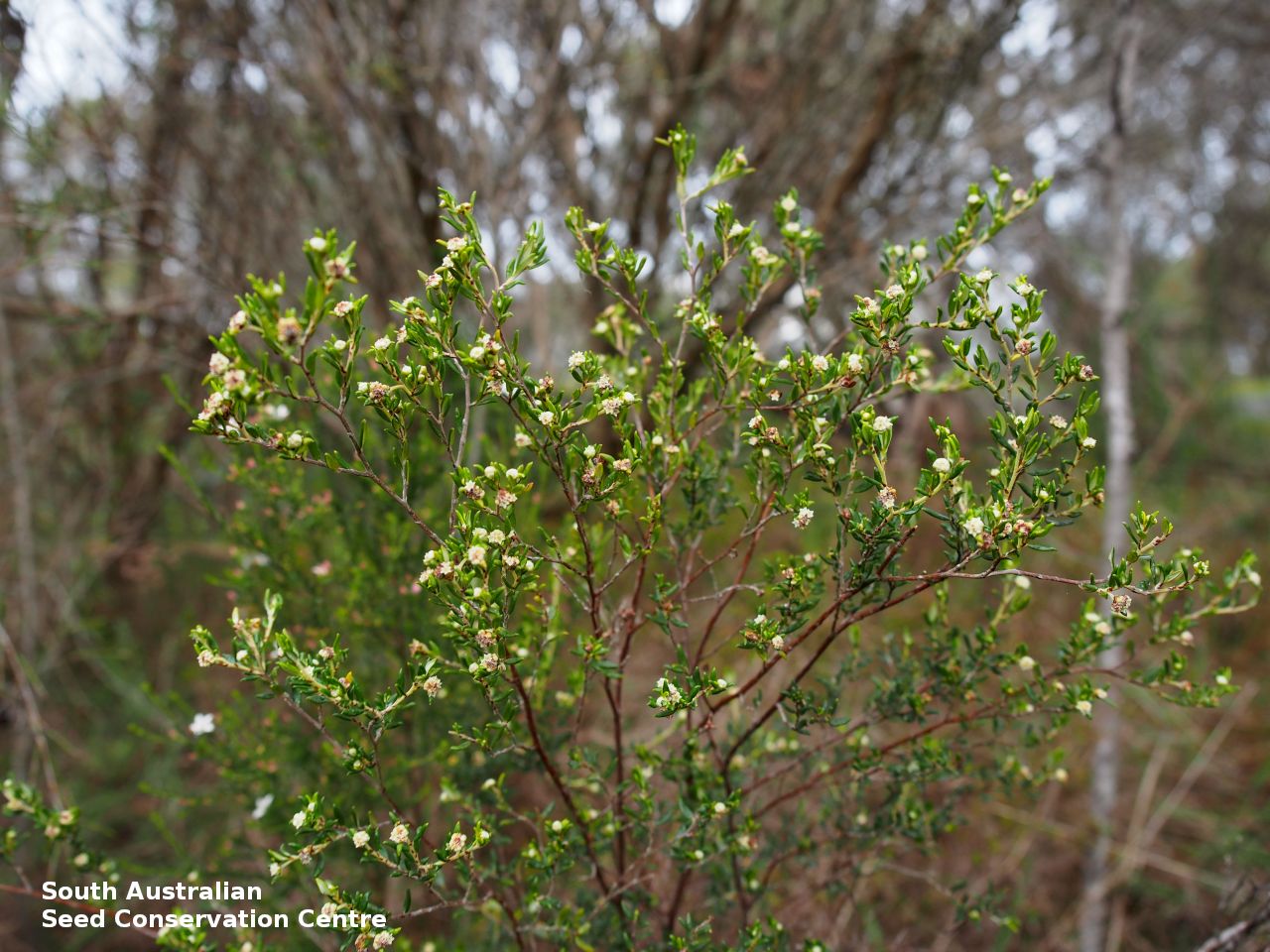

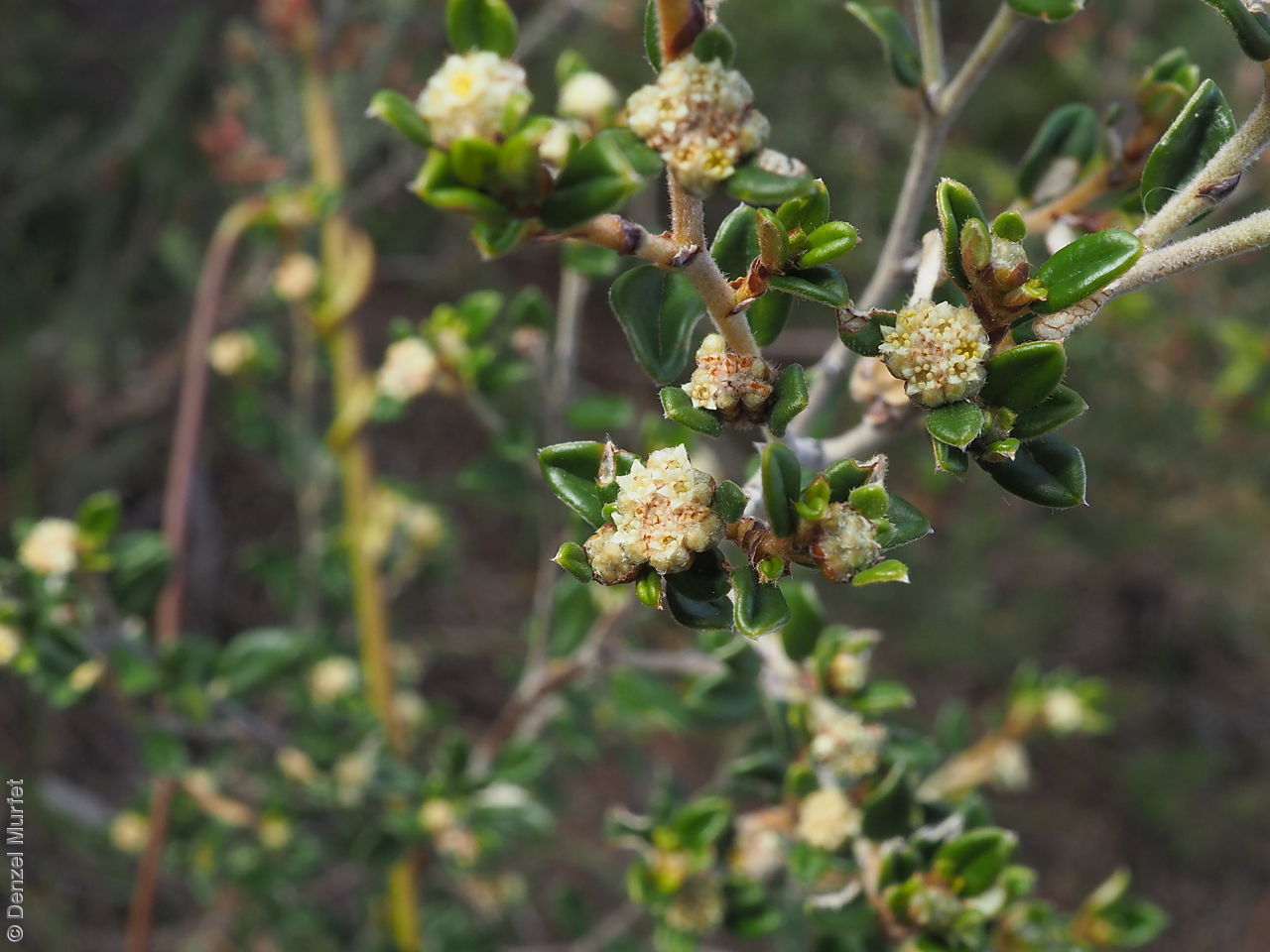
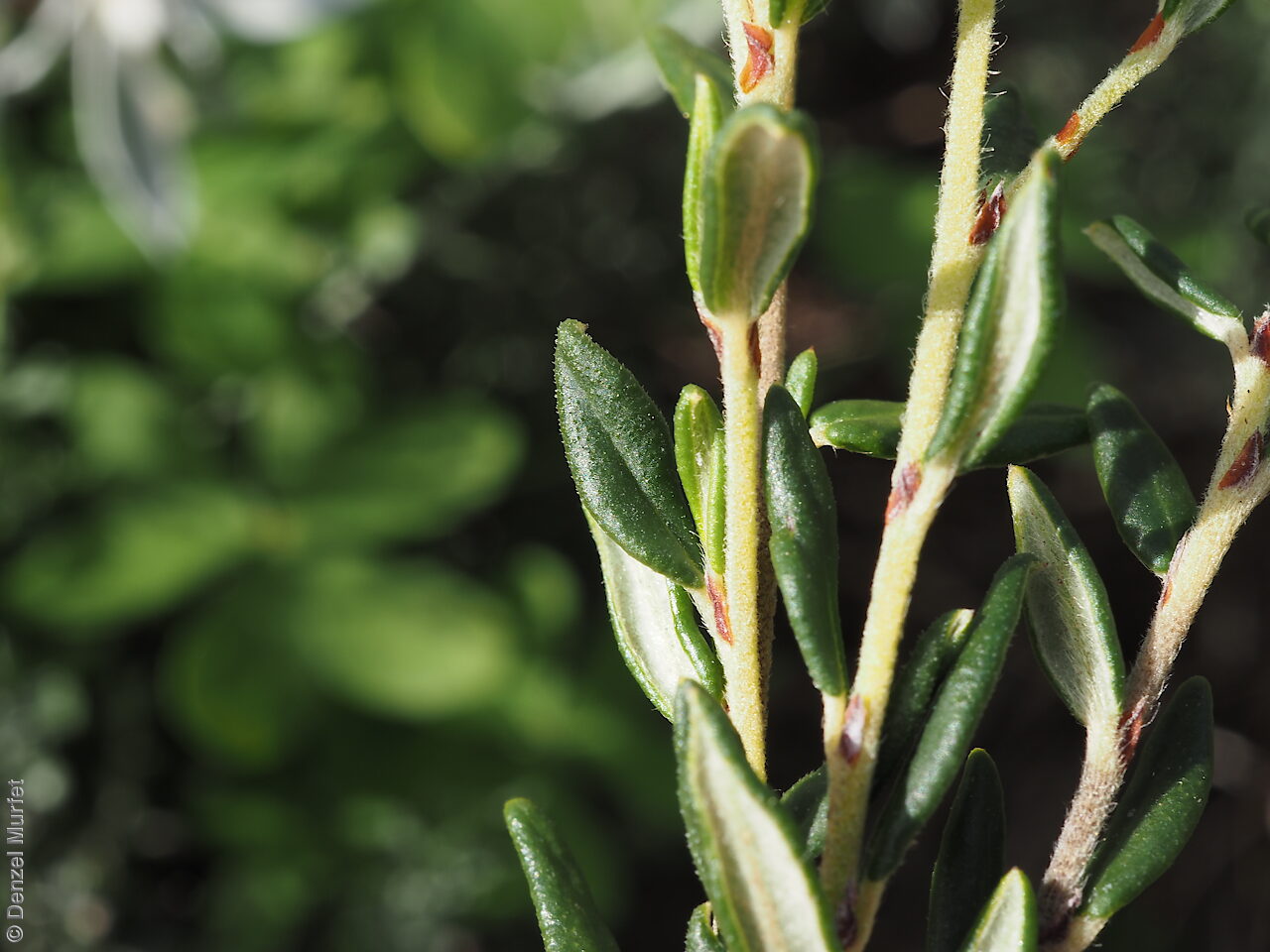
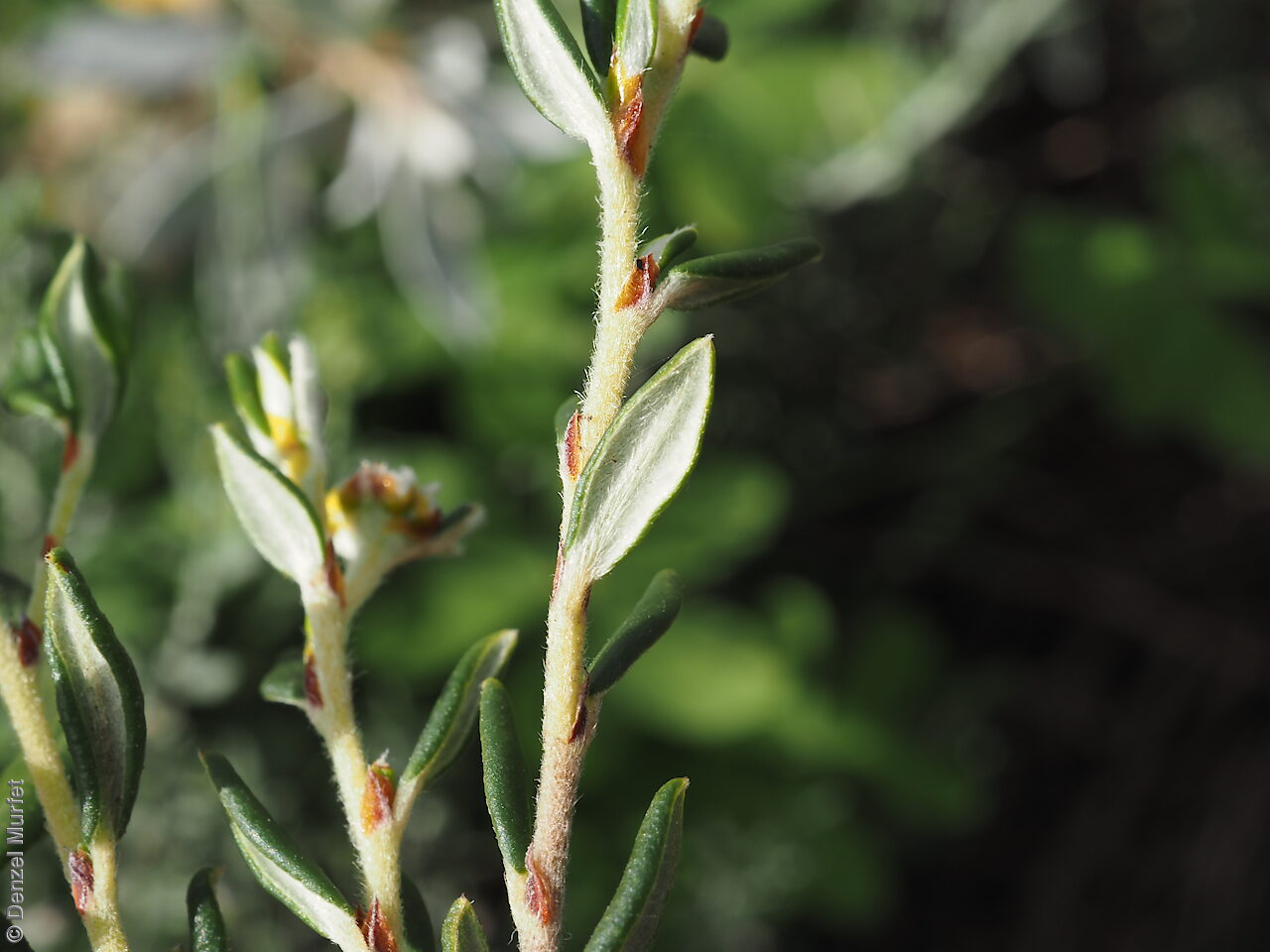
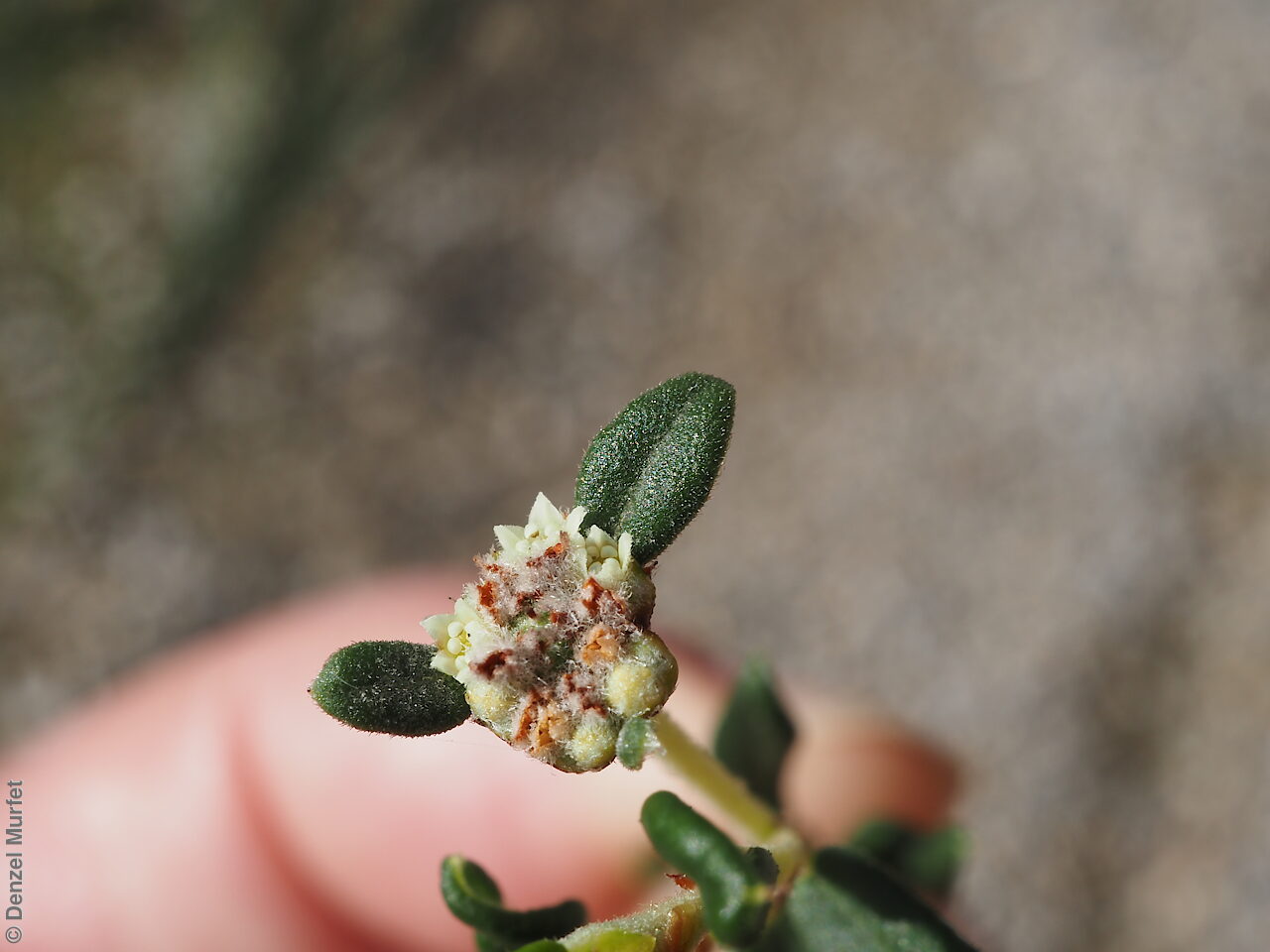
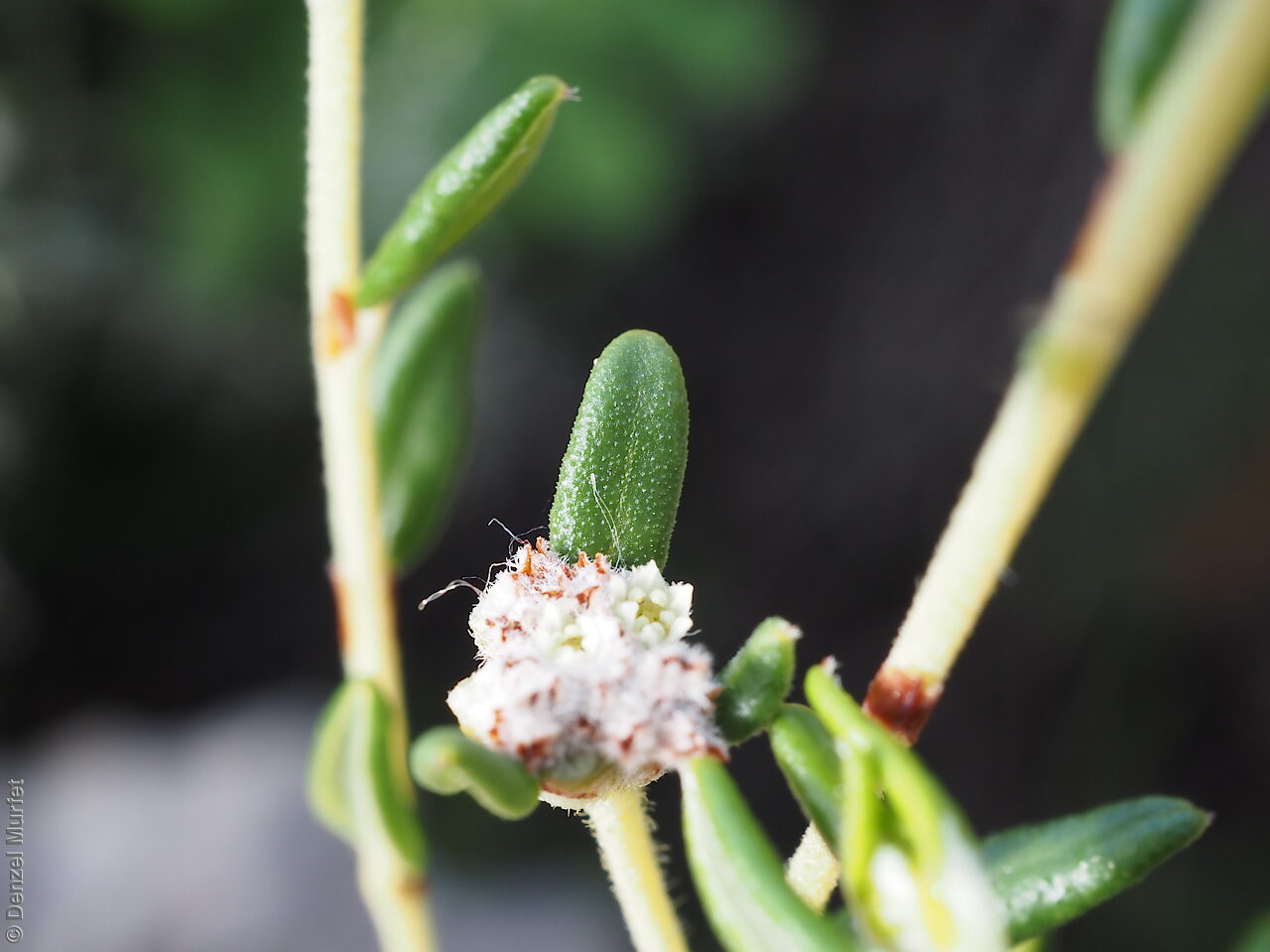
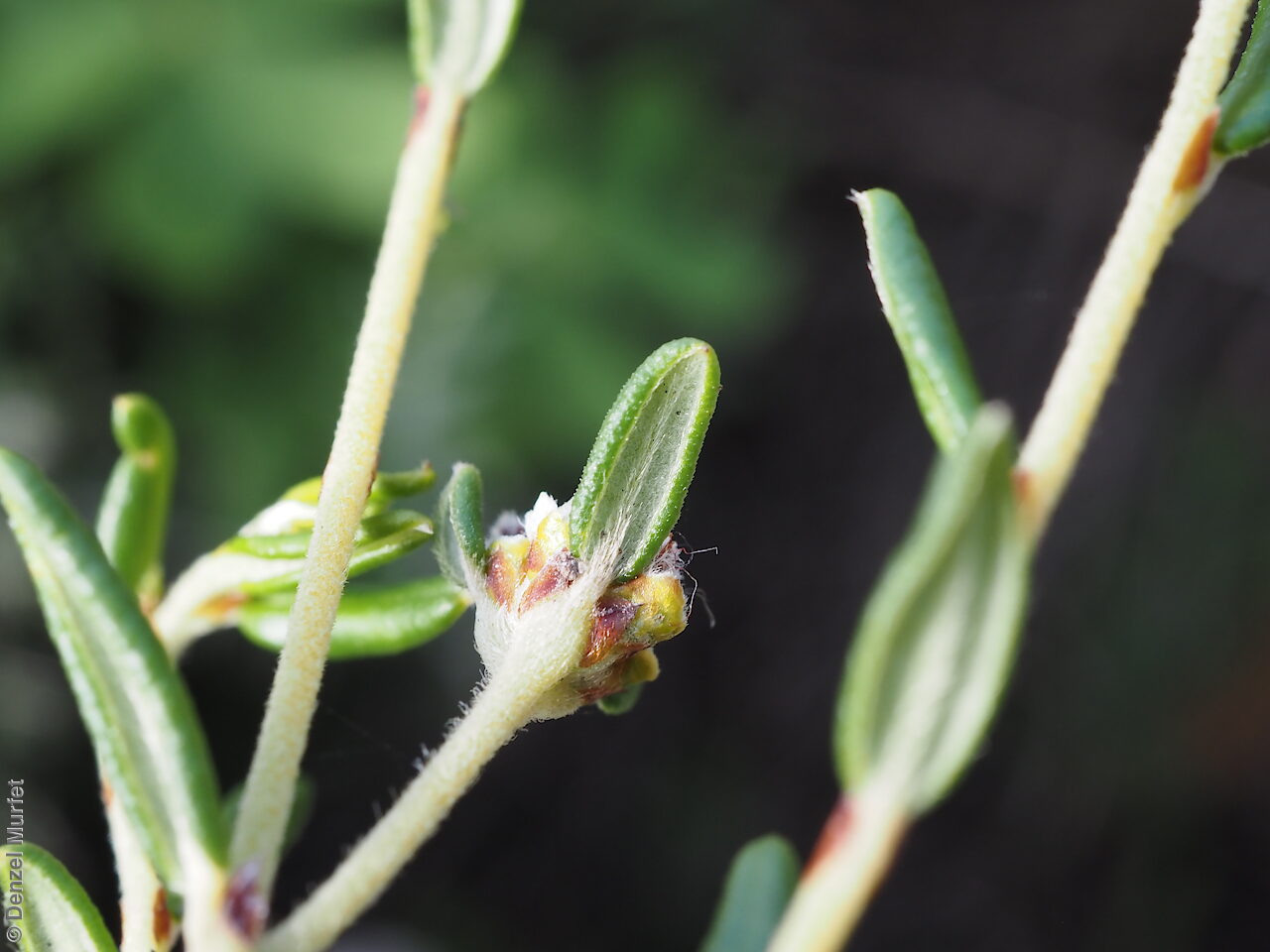
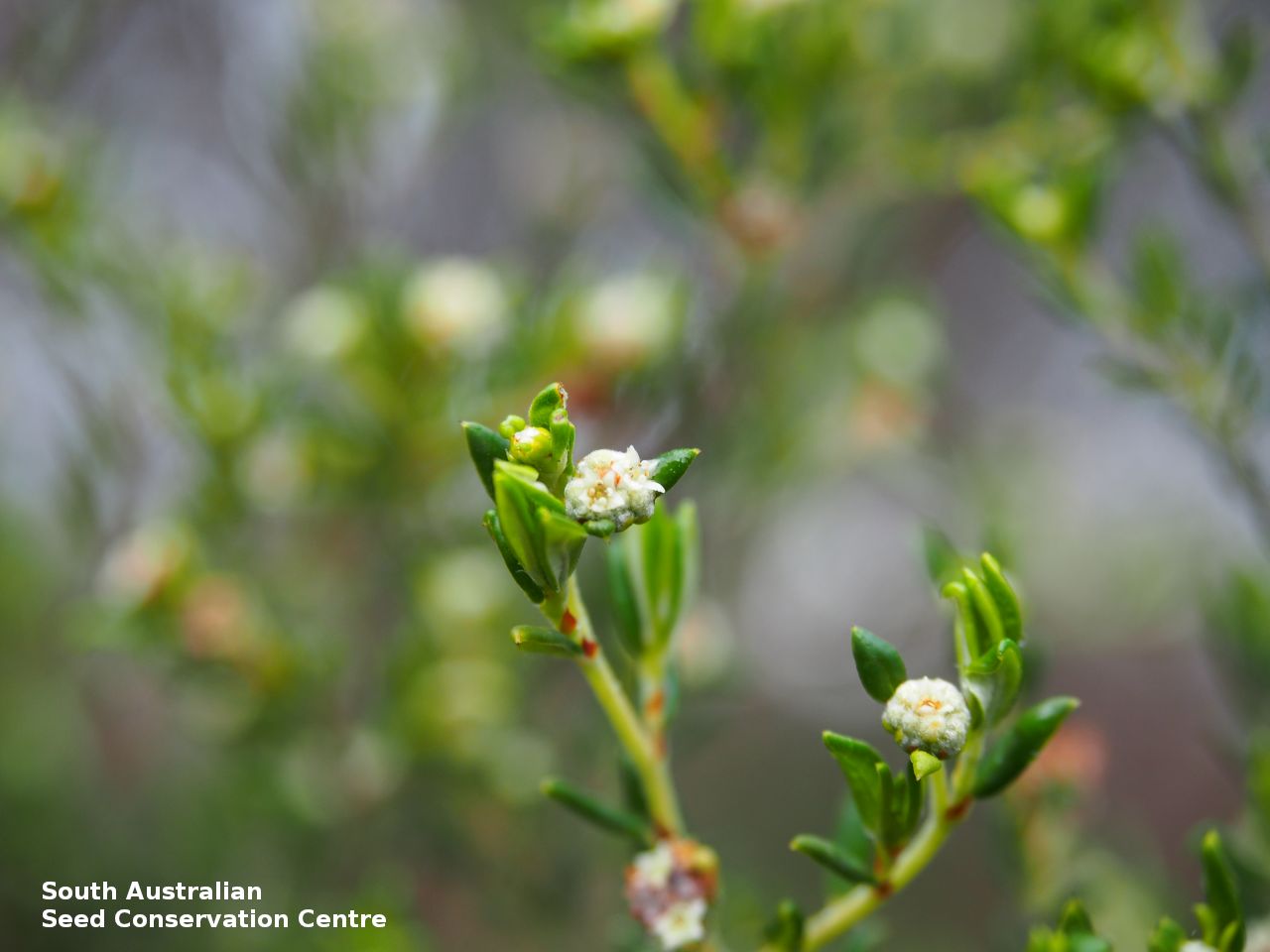
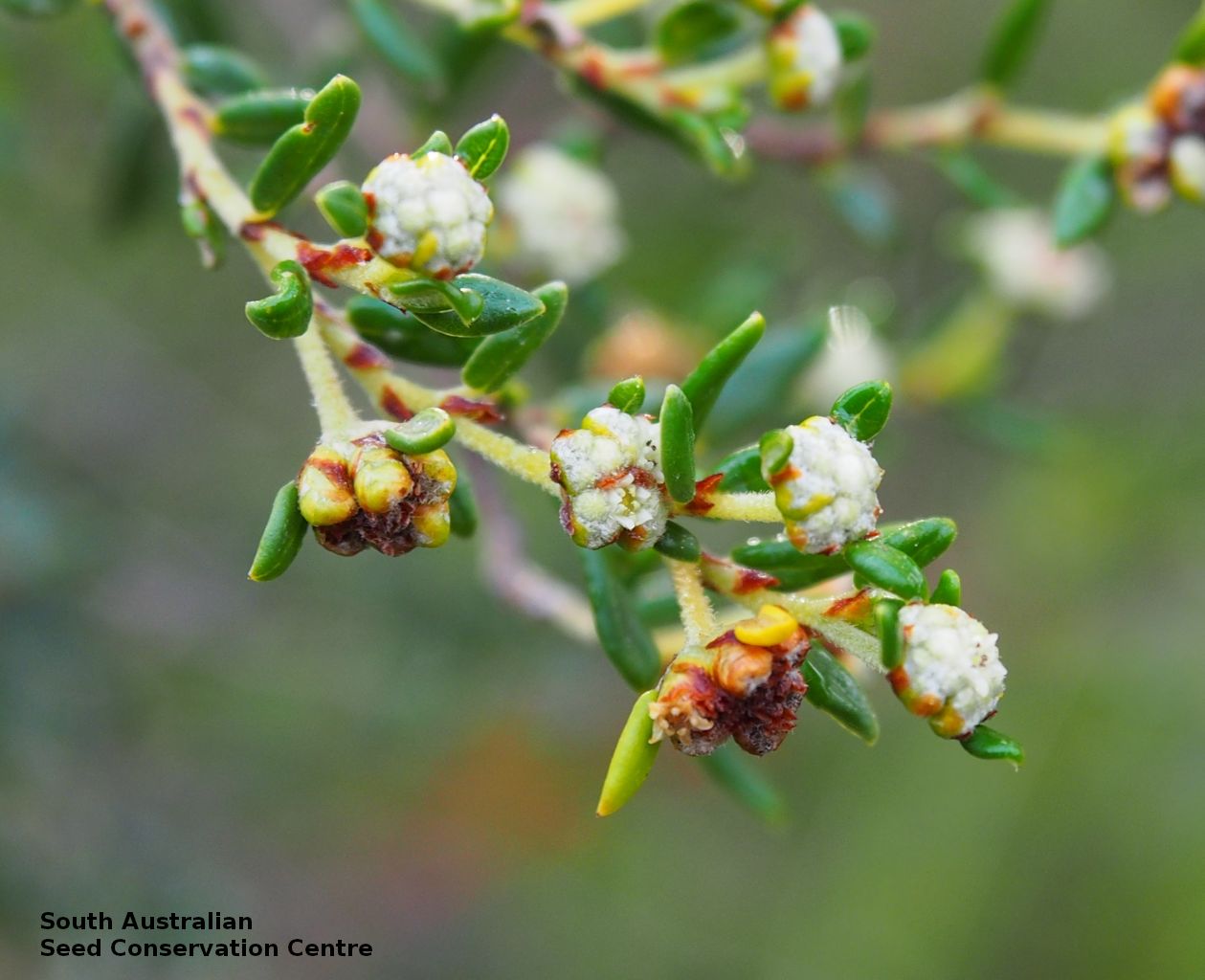
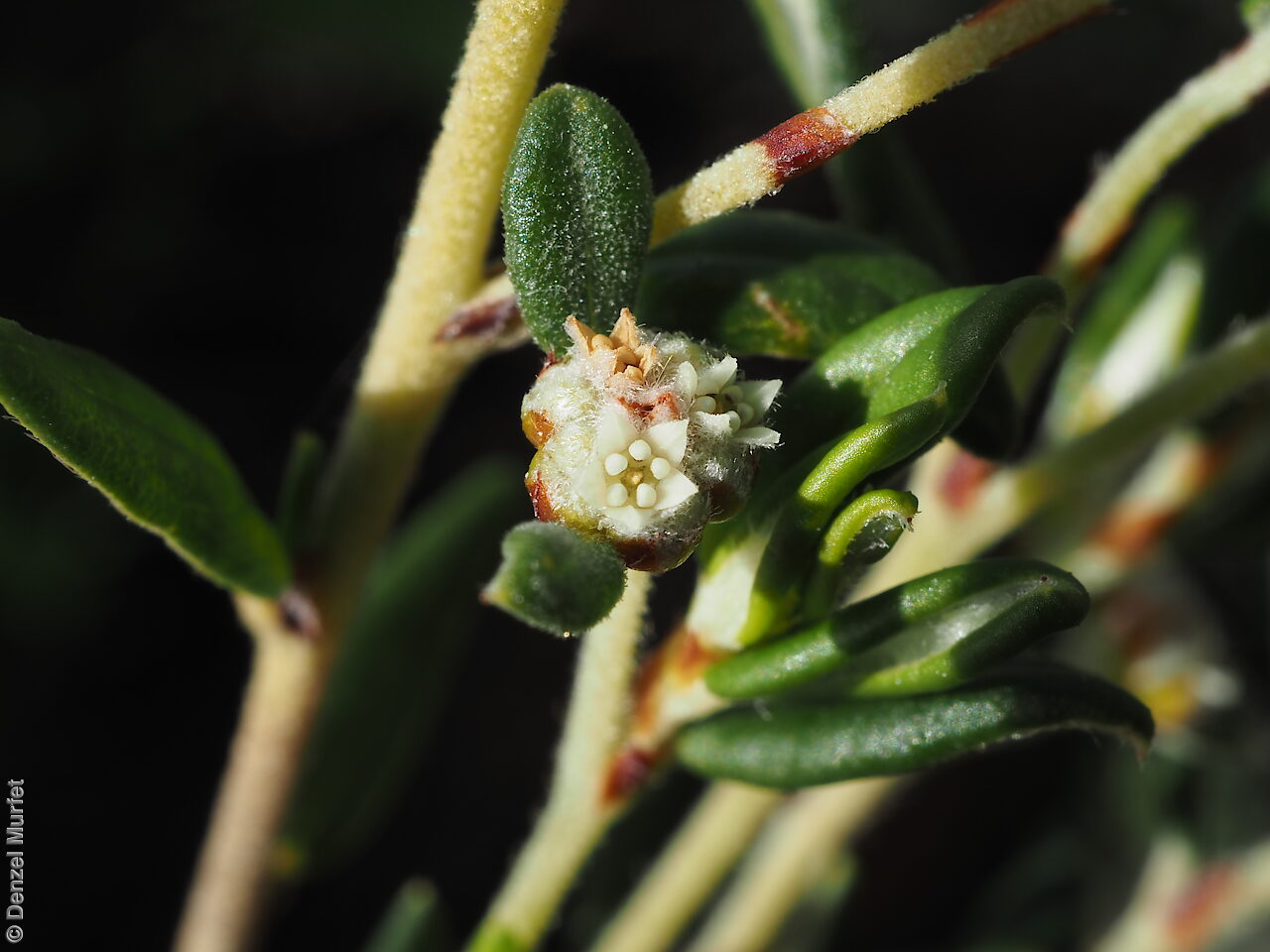
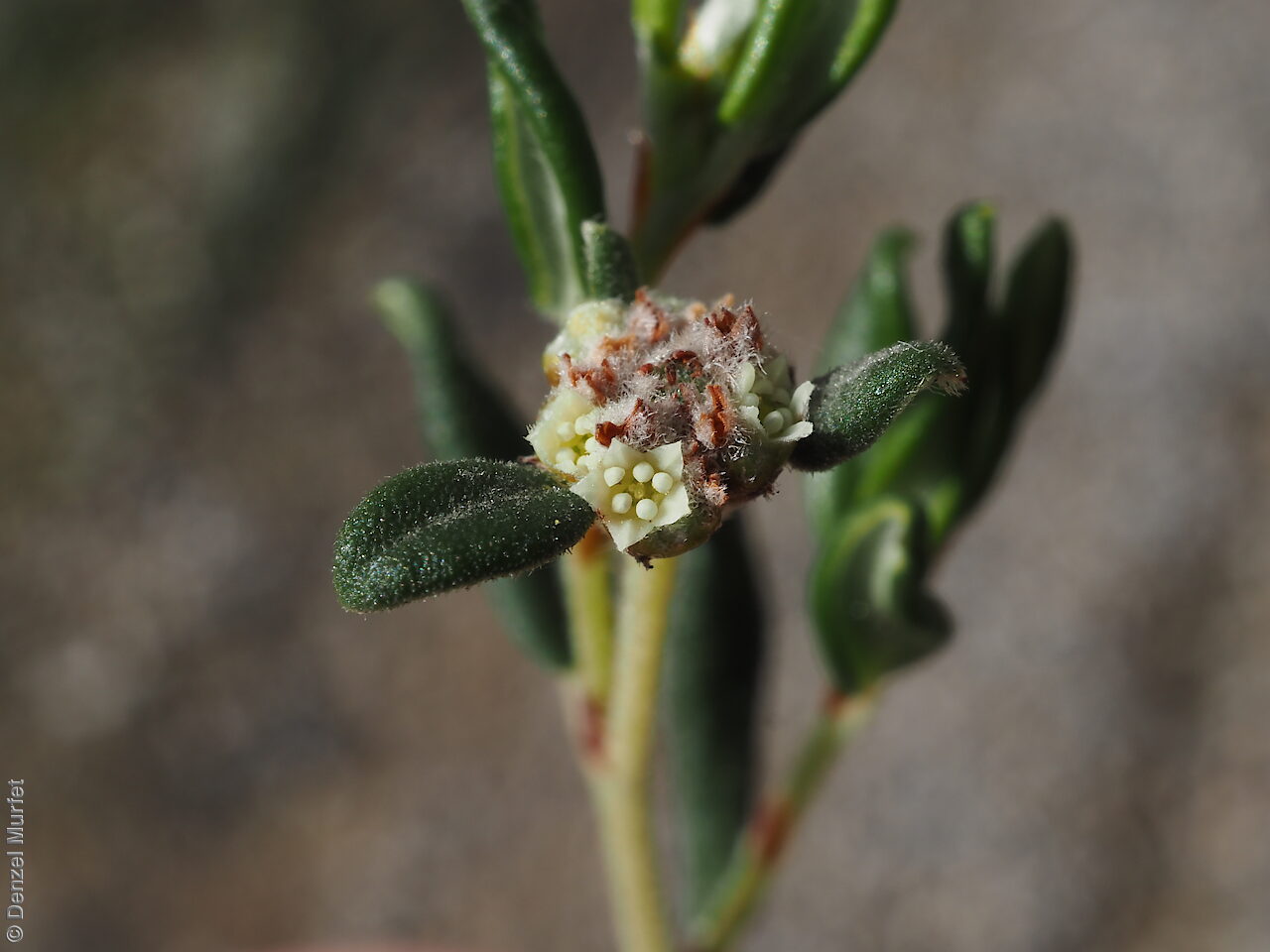

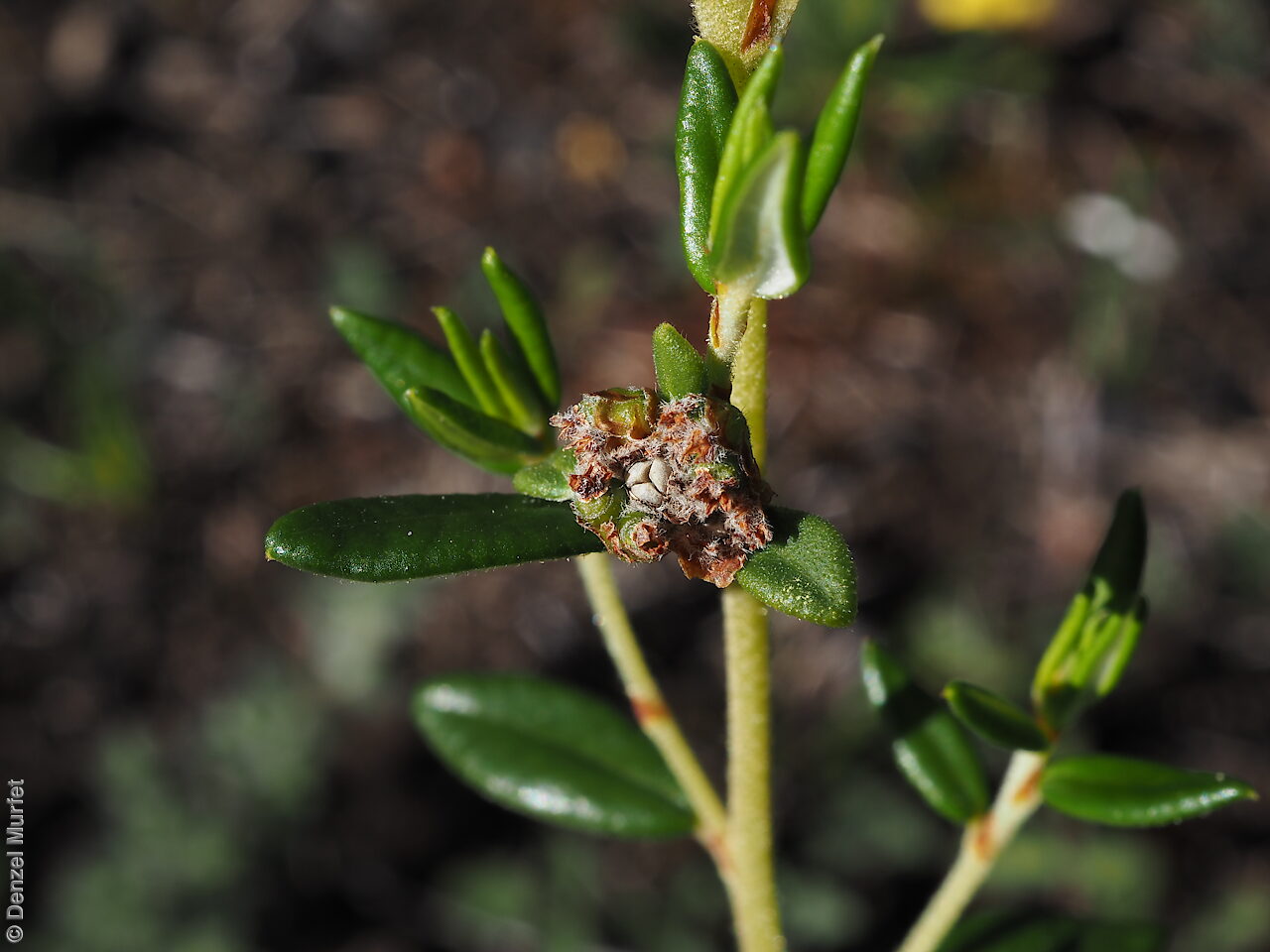
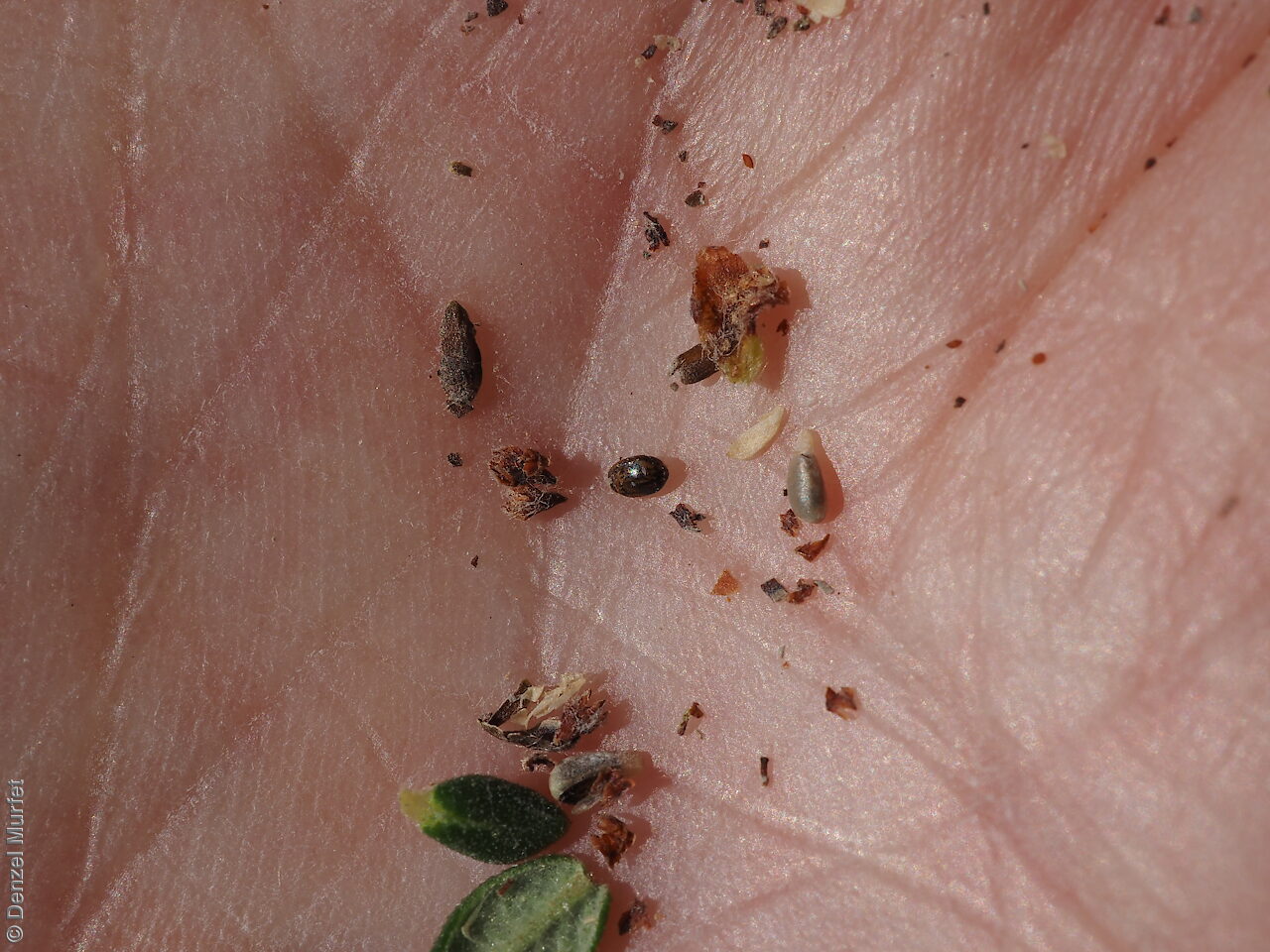

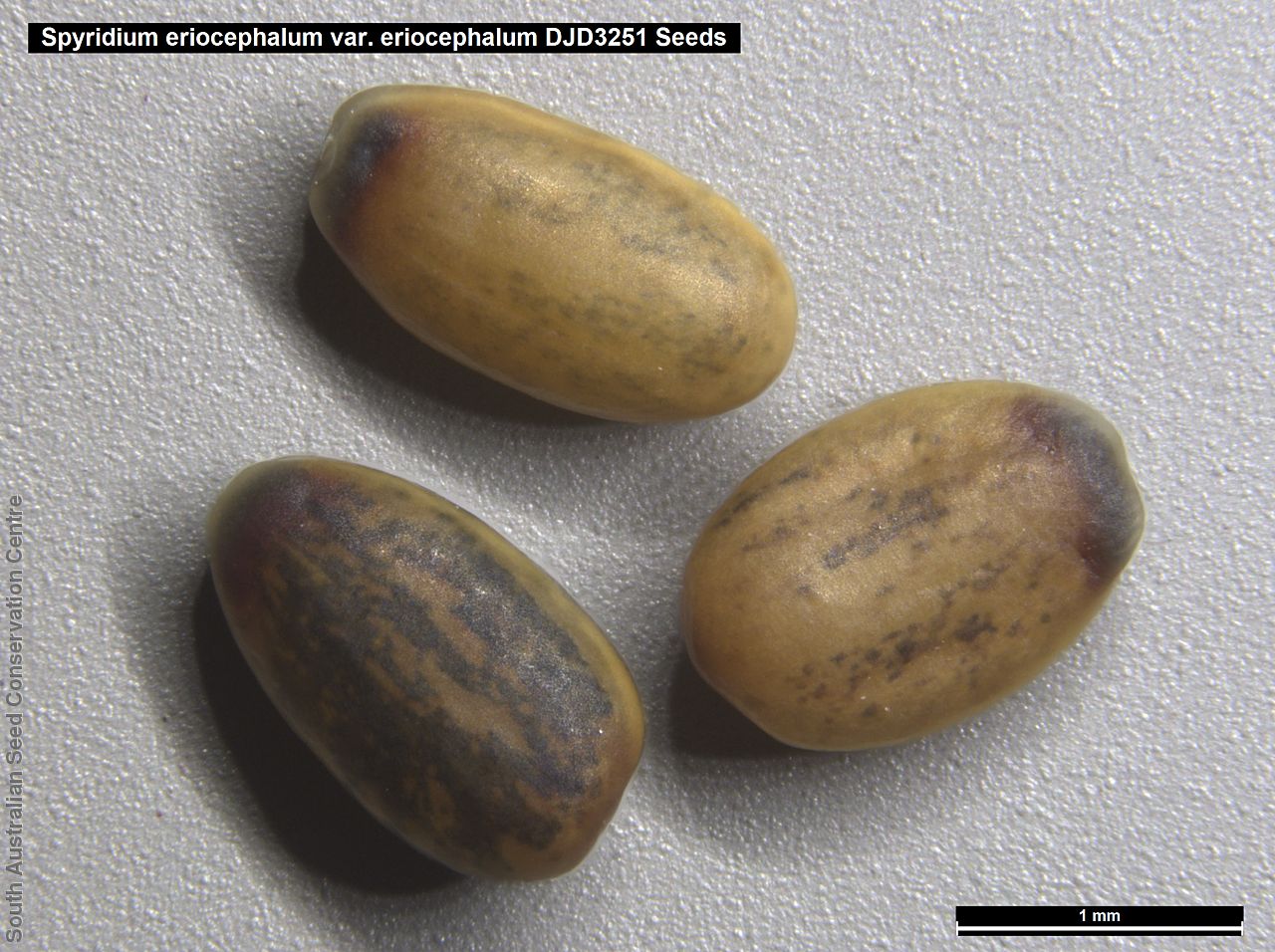


Prior names
Spyridium sp. Finniss (J. Kellermann 653 & F. Nge)
Spyridium eriocephalum var. eriocephalum, partly
Common names
Finniss Spyridium
Broad-leaf Heath Spyridium
Etymology
Spyridium from the Greek 'spyridion' meaning a small basket, referring to the flower-heads which are circled by leafy bracts. Latifolium from the Latin 'latis' meaning wide and 'folium' meaning leaf, alluding to the species’ distinctive leaves that are much wider than typical Spyridium eriocephalum.
Distribution and status
Endemic to South Australia and found in the south-east of the Mt Lofty Ranges between Strathalbyn, Goolwa and Victor Harbor, growing in dense scrub and mallee woodland with a heathy understorey on sand and loamy sand . Native. Rare in South Australia.
Herbarium region: Southern Lofty
NRM region: Adelaide and Mount Lofty Ranges
AVH map: SA distribution map (external link)
Plant description
Shrub to 1.5 m high, with densely pubescent, white to rusty, loosely appressed to spreading stellate hairs on young branches. Leaves alternate with stipules triangular to broadly triangular, to 3 mm long, fused for about half of their length, sometimes less, light brown to reddish-brown, glabrous or with hairs along midrib. Lamina narrowly elliptic to narrowly ovate or ovate, to 12 mm long and 4.2 mm wide, base obtuse to cordate, margins recurved to slightly revolute, apex acute to bluntly acute, ending in a dark mucro, upper surface glabrous, smooth to muricate or shortly hispid, lower surface visible or obscured by margins, with dense white stellate hairs, long appressed white simple hairs along midrib and leaf margins, a few along secondary veins. Inflorescence a dense axillary or terminal head with funnel shaped white flowers. Flowering between August and November. The species can be distinguished form Spyridium eriocephalum by its wider leaves which are narrowly elliptic to ovate in outline, with the lower surface being clearly visible (vs linear revolute leaves where the margins obscure most of the lower surface) and differ from Spyridium glabrisepalum in its smaller flower-heads, glabrous sepals and slightly narrower leaves. Fruits are dark brown head with numerous seed capsules. Seeds are light brown mottled ellipsoid to 1.5 mm long and 1 mm wide, with a smooth surface. Seed embryo type is spatulate fully developed.
Seed collection and propagation
Collect seeds between October and December. Collect fruit heads that are darkening and have a fluffy appearance. Rub the flower parts in your palm to see if there is any seed, which should be orange and hard. Place the heads in a tray and leave to dry for a week. Then rub the heads with your hands or a rubber bung to dislodge the seeds. Use a sieve to separate the unwanted material. Store the seeds with a desiccant such as dried silica beads or dry rice, in an air tight container in a cool and dry place. Seed viability is usually high but seed production can be low. This species has morphophysiological dormancy that need to be overcome for the seed to germinate.